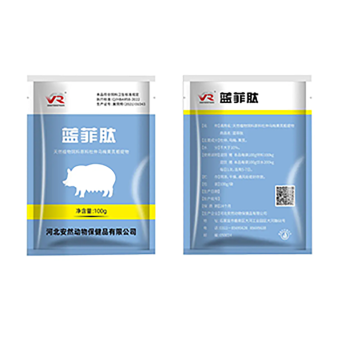- Afrikaans
- Albanian
- Amharic
- Arabic
- Armenian
- Azerbaijani
- Basque
- Belarusian
- Bengali
- Bosnian
- Bulgarian
- Catalan
- Cebuano
- Corsican
- Croatian
- Czech
- Danish
- Dutch
- English
- Esperanto
- Estonian
- Finnish
- French
- Frisian
- Galician
- Georgian
- German
- Greek
- Gujarati
- Haitian Creole
- hausa
- hawaiian
- Hebrew
- Hindi
- Miao
- Hungarian
- Icelandic
- igbo
- Indonesian
- irish
- Italian
- Japanese
- Javanese
- Kannada
- kazakh
- Khmer
- Rwandese
- Korean
- Kurdish
- Kyrgyz
- Lao
- Latin
- Latvian
- Lithuanian
- Luxembourgish
- Macedonian
- Malgashi
- Malay
- Malayalam
- Maltese
- Maori
- Marathi
- Mongolian
- Myanmar
- Nepali
- Norwegian
- Norwegian
- Occitan
- Pashto
- Persian
- Polish
- Portuguese
- Punjabi
- Romanian
- Russian
- Samoan
- Scottish Gaelic
- Serbian
- Sesotho
- Shona
- Sindhi
- Sinhala
- Slovak
- Slovenian
- Somali
- Spanish
- Sundanese
- Swahili
- Swedish
- Tagalog
- Tajik
- Tamil
- Tatar
- Telugu
- Thai
- Turkish
- Turkmen
- Ukrainian
- Urdu
- Uighur
- Uzbek
- Vietnamese
- Welsh
- Bantu
- Yiddish
- Yoruba
- Zulu
10 月 . 06, 2024 15:34 Back to list
enrofloxacin injection cattle
Understanding Enrofloxacin Injection in Cattle
Enrofloxacin is a broad-spectrum fluoroquinolone antibiotic that is commonly used in veterinary medicine, particularly in cattle. This medication is pivotal for the treatment of various bacterial infections, ensuring the health and productivity of livestock. The use of enrofloxacin in cattle requires careful consideration of dosage, administration, and potential implications on animal health and food safety.
Mechanism of Action
Enrofloxacin works by inhibiting bacterial DNA gyrase and topoisomerase IV, enzymes critical for DNA replication and transcription. This action disrupts bacterial cell division, leading to the death of susceptible bacteria. Its broad spectrum includes many pathogens commonly associated with bovine diseases, such as Mannheimia haemolytica, Escherichia coli, and Salmonella spp., making it a valuable tool in managing infectious diseases in cattle.
Indications for Use
Enrofloxacin is primarily indicated for the treatment of respiratory infections, such as bovine respiratory disease (BRD), which is a major concern among cattle farmers due to its high morbidity and mortality rates. It is also used for treating urinary tract infections, mastitis, and other systemic infections. The ability to effectively control these infections not only improves animal welfare but also enhances productivity, which is critical in a highly competitive agricultural industry.
Dosage and Administration
enrofloxacin injection cattle

The administration of enrofloxacin in cattle is typically done via subcutaneous or intravenous injection, and the dosage may vary based on the specific condition being treated, the severity of the infection, and the weight of the animal. It is crucial for veterinarians to follow established guidelines to avoid underdosing or overdosing, which can lead to treatment failure or increased risk of side effects.
Withdrawal Times and Food Safety
One of the significant concerns when using enrofloxacin in food-producing animals is the potential for antibiotic residues to remain in meat and milk. Regulatory agencies establish strict withdrawal times—periods after treatment during which the animal should not be slaughtered or its milk collected for human consumption. This is to ensure that any residues are cleared from the animal's system, safeguarding public health and complying with food safety regulations. Farmers and veterinarians must strictly adhere to these guidelines to prevent violations that could lead to severe economic consequences.
Resistance Concerns
The use of enrofloxacin and other antibiotics in livestock has raised concerns regarding the development of antimicrobial resistance. Overuse or improper use of antibiotics can contribute to resistance among bacteria, making infections more challenging to treat in the future. It is vital for cattle producers to implement responsible antibiotic stewardship programs that emphasize the judicious use of medications, combining them with good management practices to minimize disease occurrence.
Conclusion
Enrofloxacin injection in cattle plays a crucial role in maintaining animal health and productivity. Understanding its mechanism of action, appropriate usage guidelines, and the importance of adhering to withdrawal times ensures that both animal welfare and food safety are prioritized. As the challenge of antibiotic resistance looms, responsible use of enrofloxacin and continuous education for livestock producers can help ensure its efficacy for future generations.
-
The Power of Radix Isatidis Extract for Your Health and Wellness
NewsOct.29,2024
-
Neomycin Sulfate Soluble Powder: A Versatile Solution for Pet Health
NewsOct.29,2024
-
Lincomycin Hydrochloride Soluble Powder – The Essential Solution
NewsOct.29,2024
-
Garamycin Gentamicin Sulfate for Effective Infection Control
NewsOct.29,2024
-
Doxycycline Hyclate Soluble Powder: Your Antibiotic Needs
NewsOct.29,2024
-
Tilmicosin Premix: The Ultimate Solution for Poultry Health
NewsOct.29,2024













